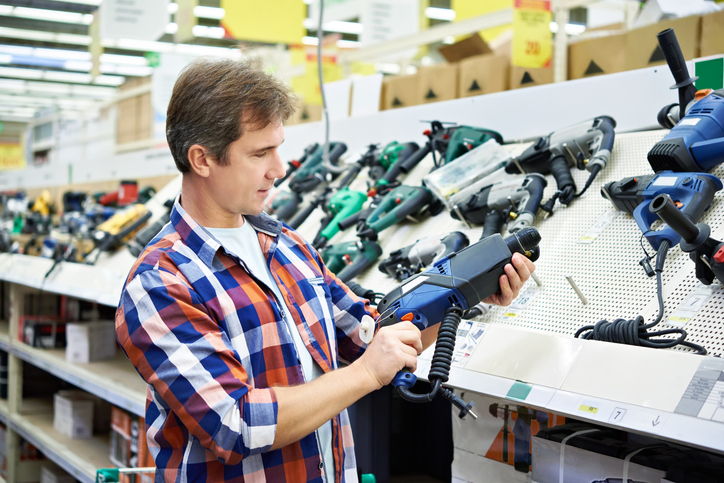Reviewing the basics of power tool safety is important in the workplace, but it’s also crucial at home before starting any kind of DIY project.

gettyimages.ca/sergeyryzhov
In a workplace, employers are responsible for providing safety training and supervision. They need to be aware of hazards and have plans for ensuring workers know how to perform specific tasks safely. This includes the safe use of machines and equipment, such as power tools.
For people using power tools at home, it’s a totally different story. It’s important to take responsibility for our own safety before you get started on any do-it-yourself projects.
“You might decide that you’d like to build a shelf, so you look at a video on YouTube and it doesn’t look that tough, so you go out and pick up a few tools and some screws and you’re going to put this thing together,” says Lorne Davies, a senior safety advisor with the Manufacturing Safety Alliance of BC. “You’ve never had any previous experience, but the person on YouTube makes it look pretty simple. However, this is where a lot of issues happen with home situations. If you make a mistake, you could end up with life-changing injuries.”
Lorne has responded to many workplace injuries resulting from the misuse of powered hand tools — the source of 7,514 workplace injury claims filed in B.C. between 2017 and 2021. I asked Lorne for his advice to people doing DIY projects at home.
Know how to use the tool
Be sure you are informed about the safety of any tools you are using for DIY projects at home. Whether it’s a jigsaw, drill, router, hand grinder, portable circular saw, or anything else, remember that your safety is in your own hands.
Always read the owner’s manual and follow all safety instructions.
Evaluate the task and look at the environment you are working in. For example, if you’re going to use a circular saw, consider what you’re going to use it for. Be sure you know the difference between cutting concrete and wood. What safety measures are required for each material?
“First, make sure that the tool is in good condition and that it has the right attachments on,” he says.
Consider the safety of those around you
“Make sure you’re not set up in a spot where other people could be injured and that you’re not creating a hazard for other people,” Lorne says. “For instance, if you break a grinding wheel, are the pieces going to fly across the shop and hurt someone else?”
He says to consider the following: If you’re cutting a piece of wood with a circular saw, directly in front of the door, what are the chances that someone may smack you when coming out of the door? You will need to set up a sawhorse away from the regular flow of traffic.
Depending on your task, consider what personal protective equipment (PPE) you will need. For example, if you’re cutting concrete that is likely going to produce silica dust, you should find out if there is a way to control the dust and what kind of respirator or dust mask is needed. Silica is a mineral found in sand, as well as in quartz and other types of rock. It’s one of the most common hazards on worksites in construction, oil and gas, manufacturing, and agriculture. (Read more about this in my post Protecting workers from silica dust is easier with online tool.)
For much more information, see this recording of Lorne’s online safety seminar, Ask Me Anything: Power Tool Safety. Also see WorkSafeBC’s webpage on power tools.
Thanks to Lorne for speaking with me about this.


